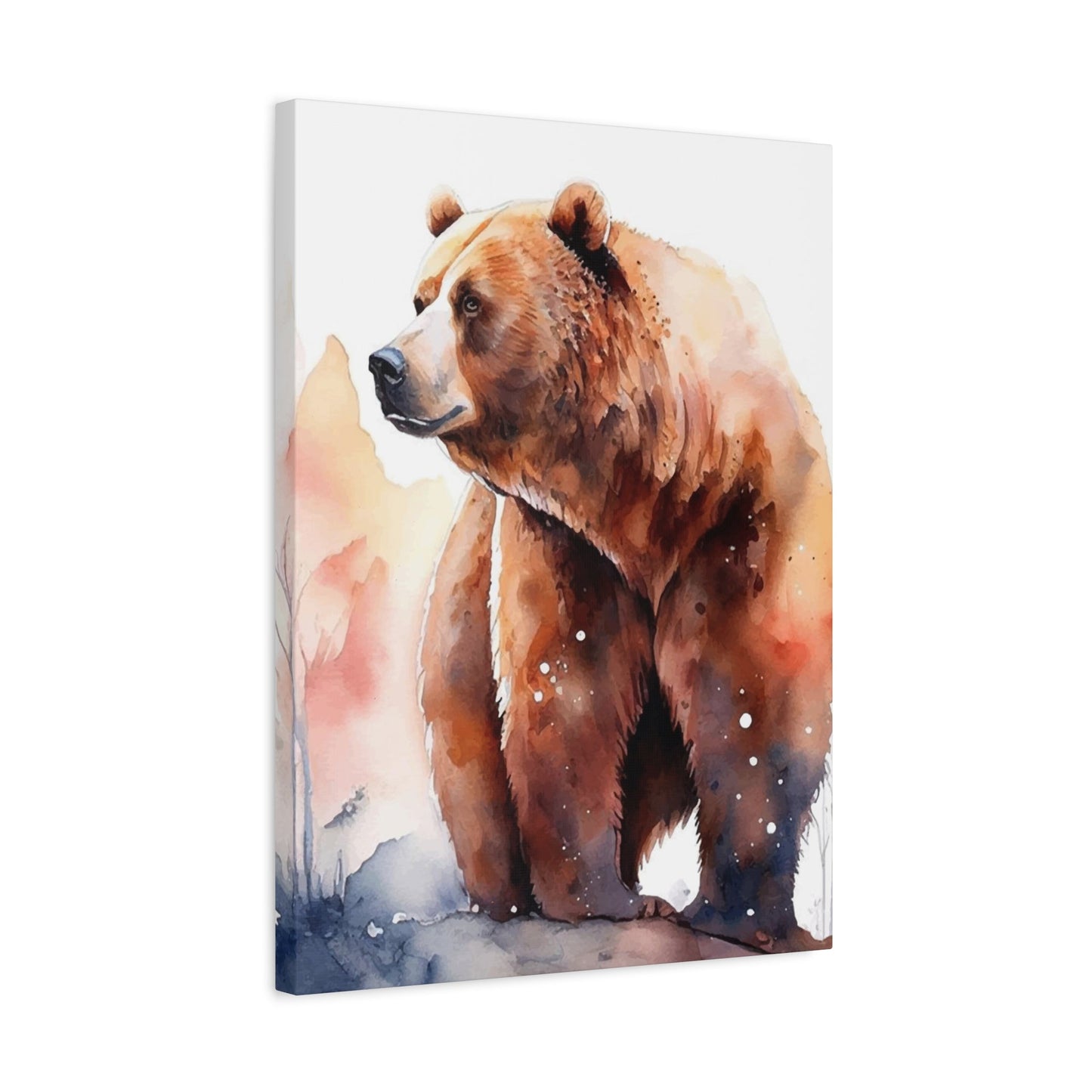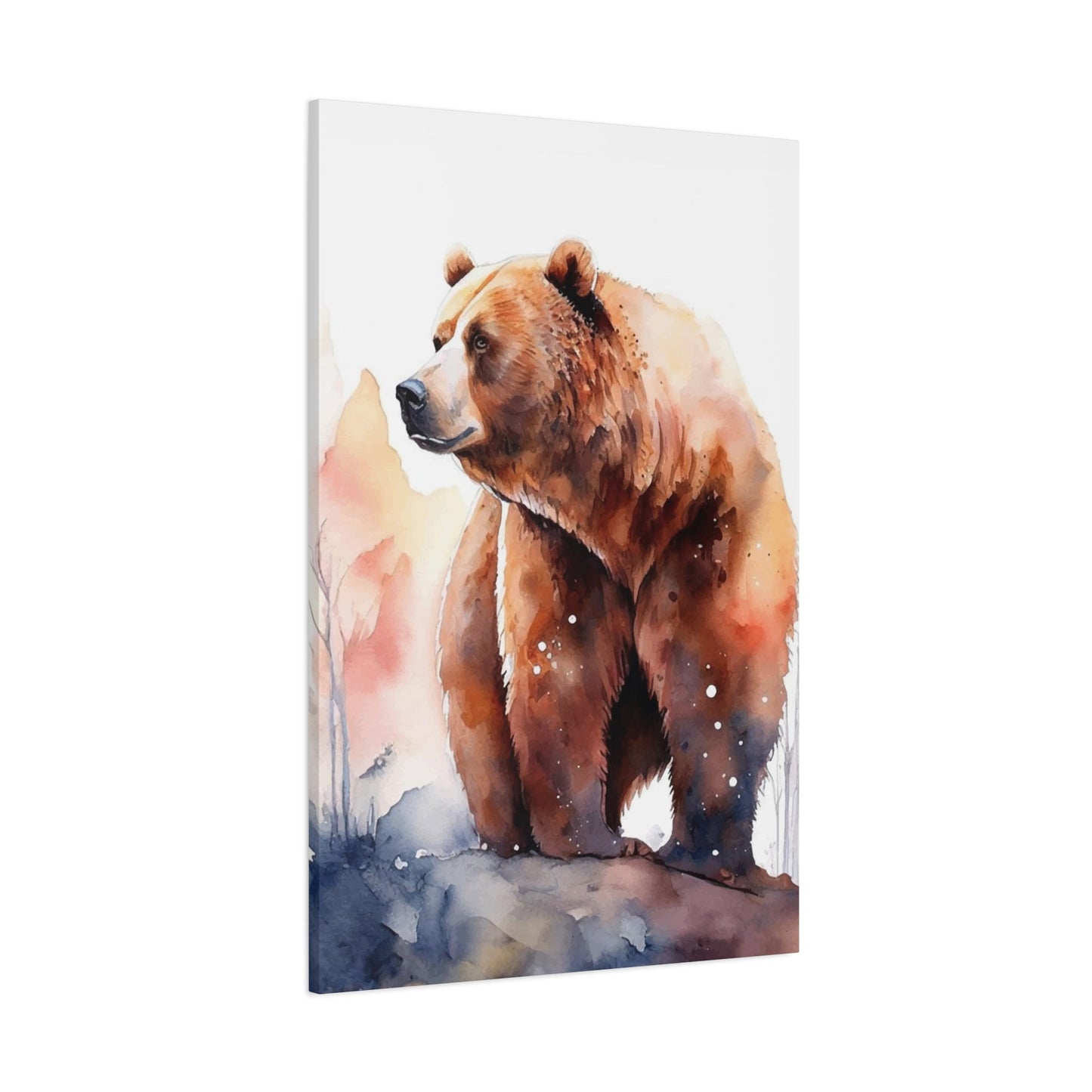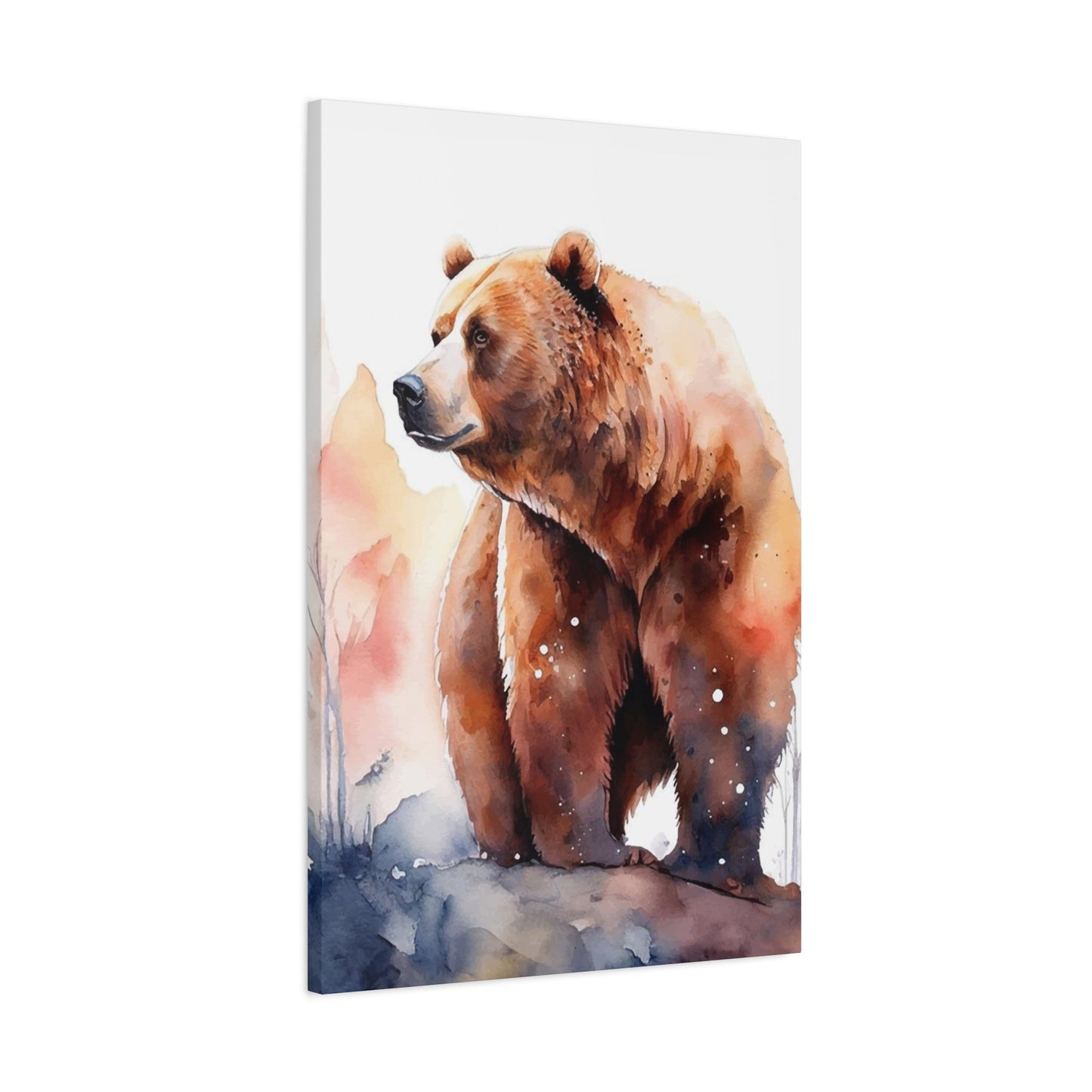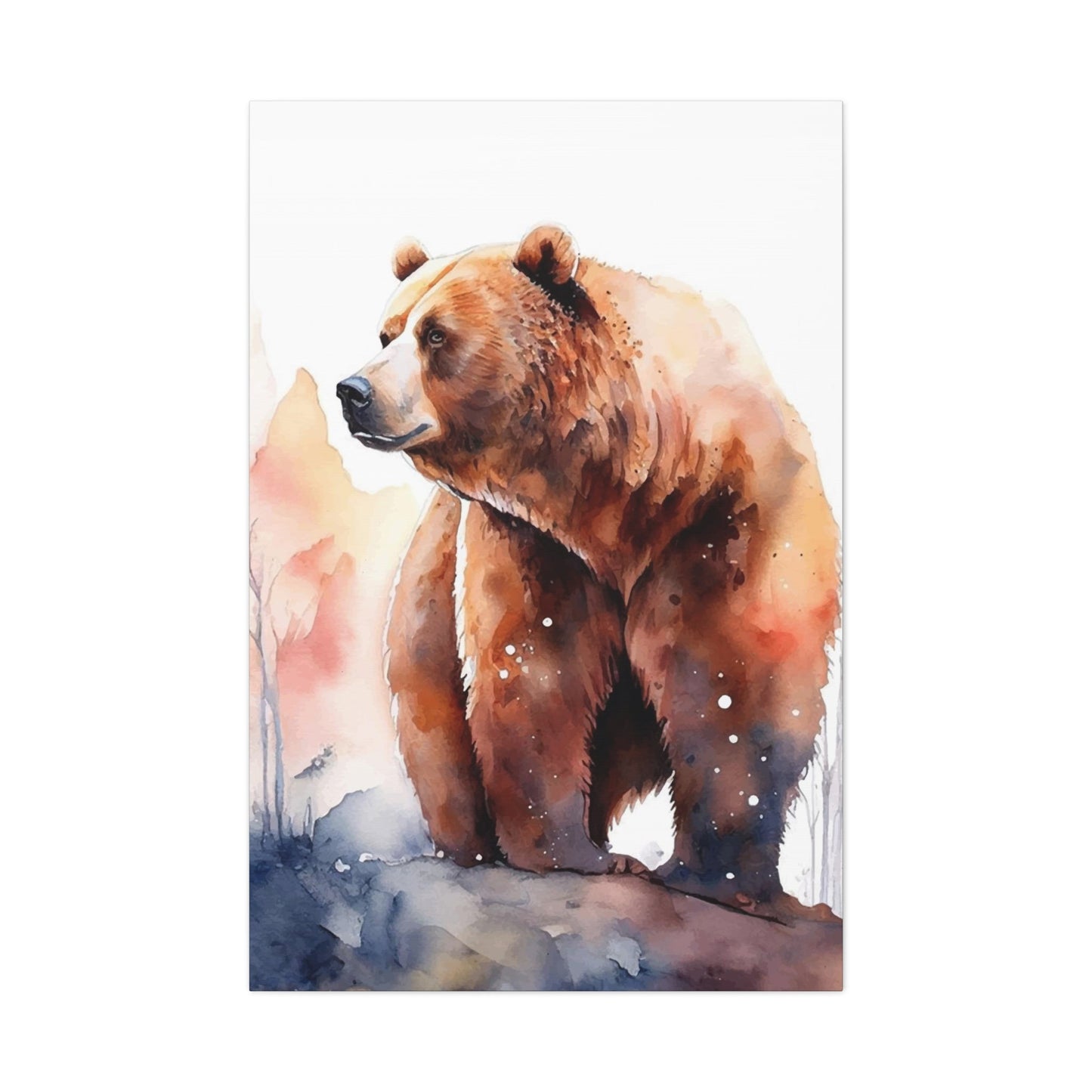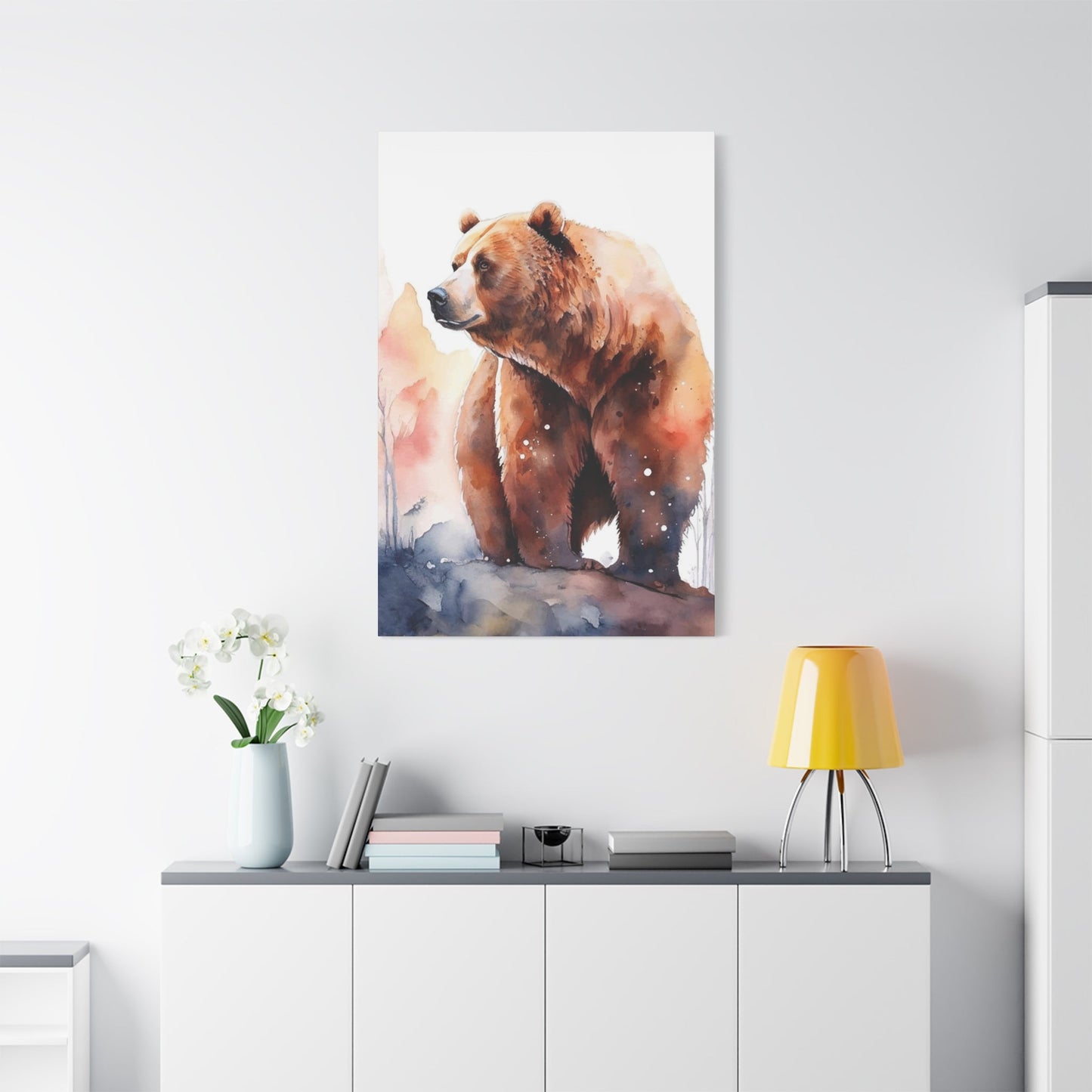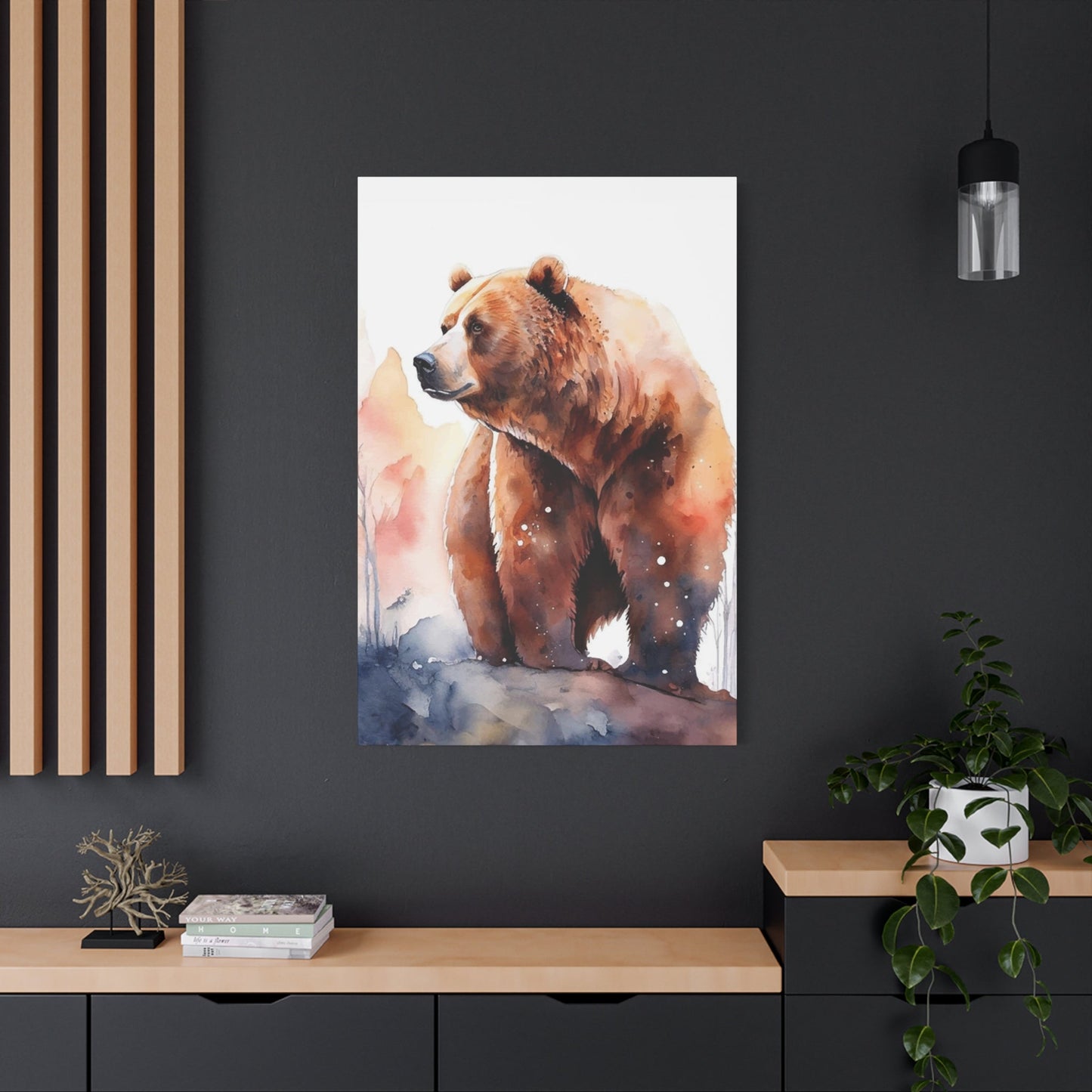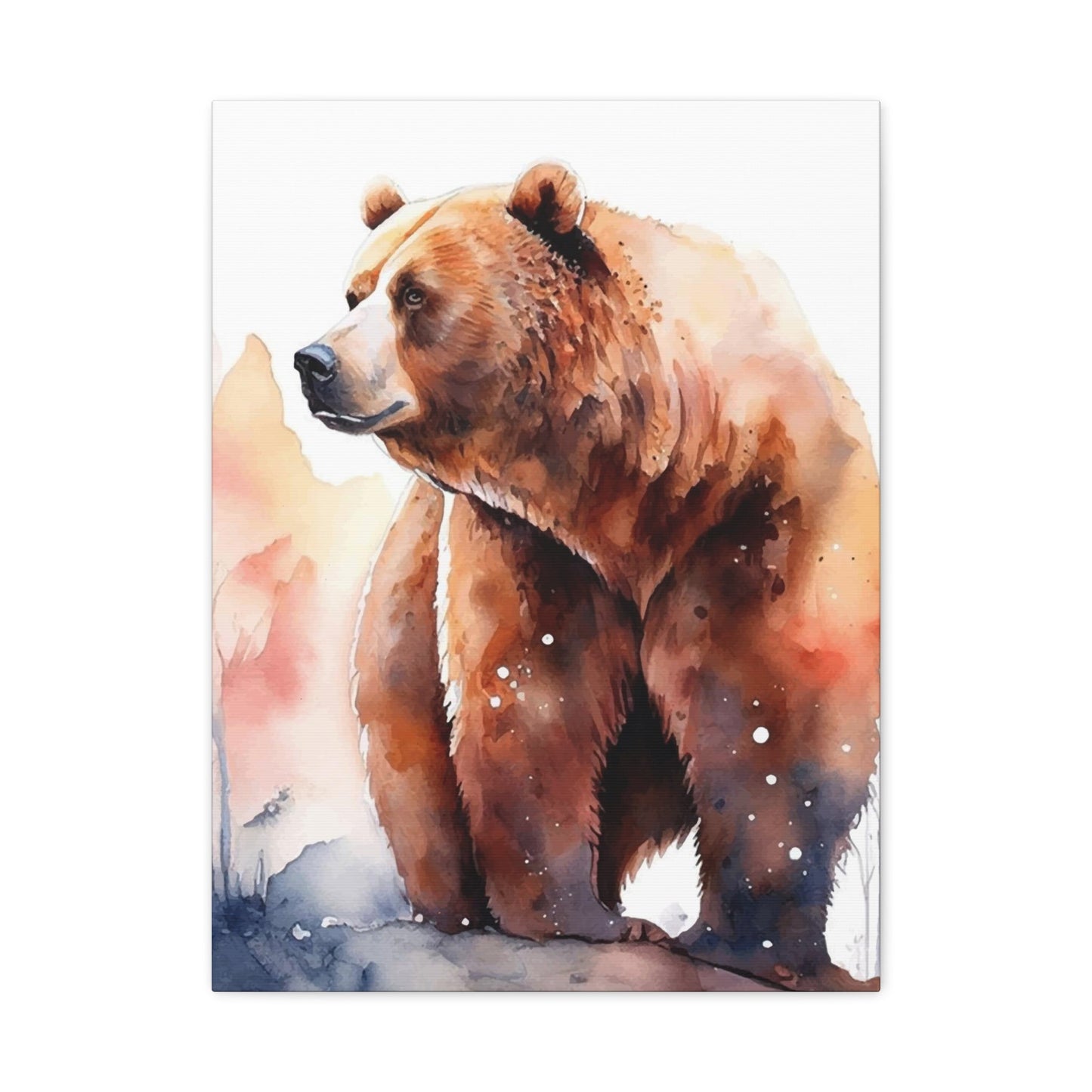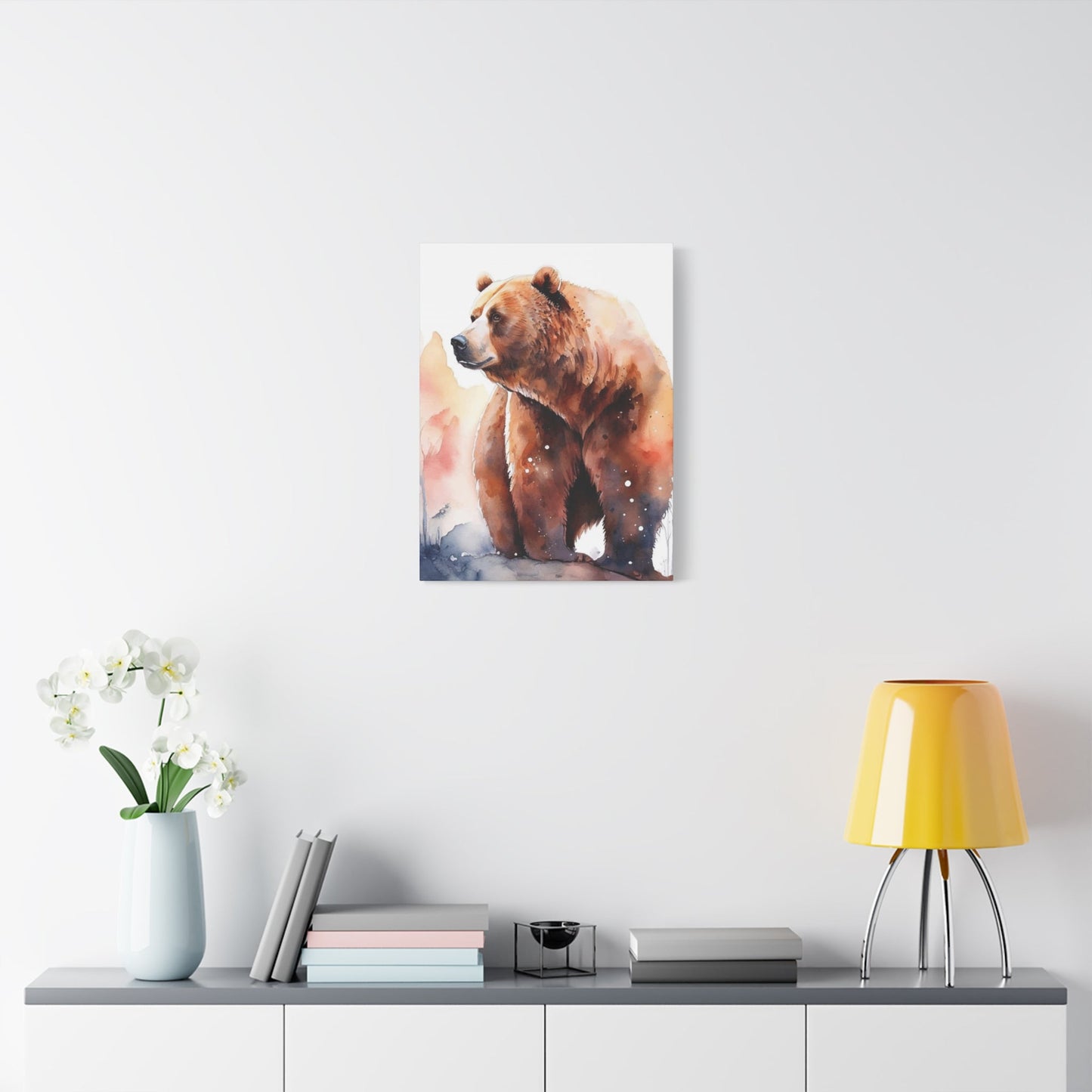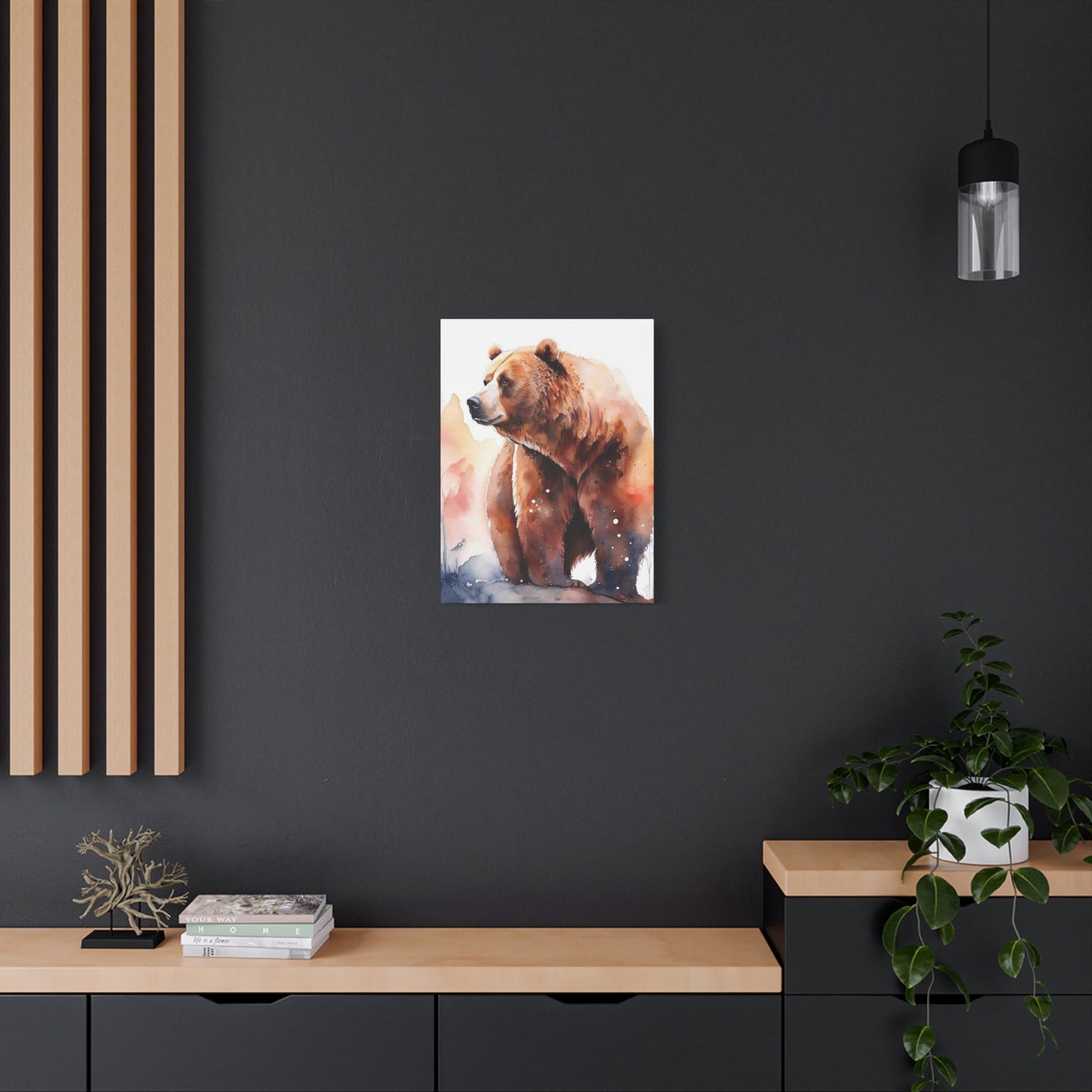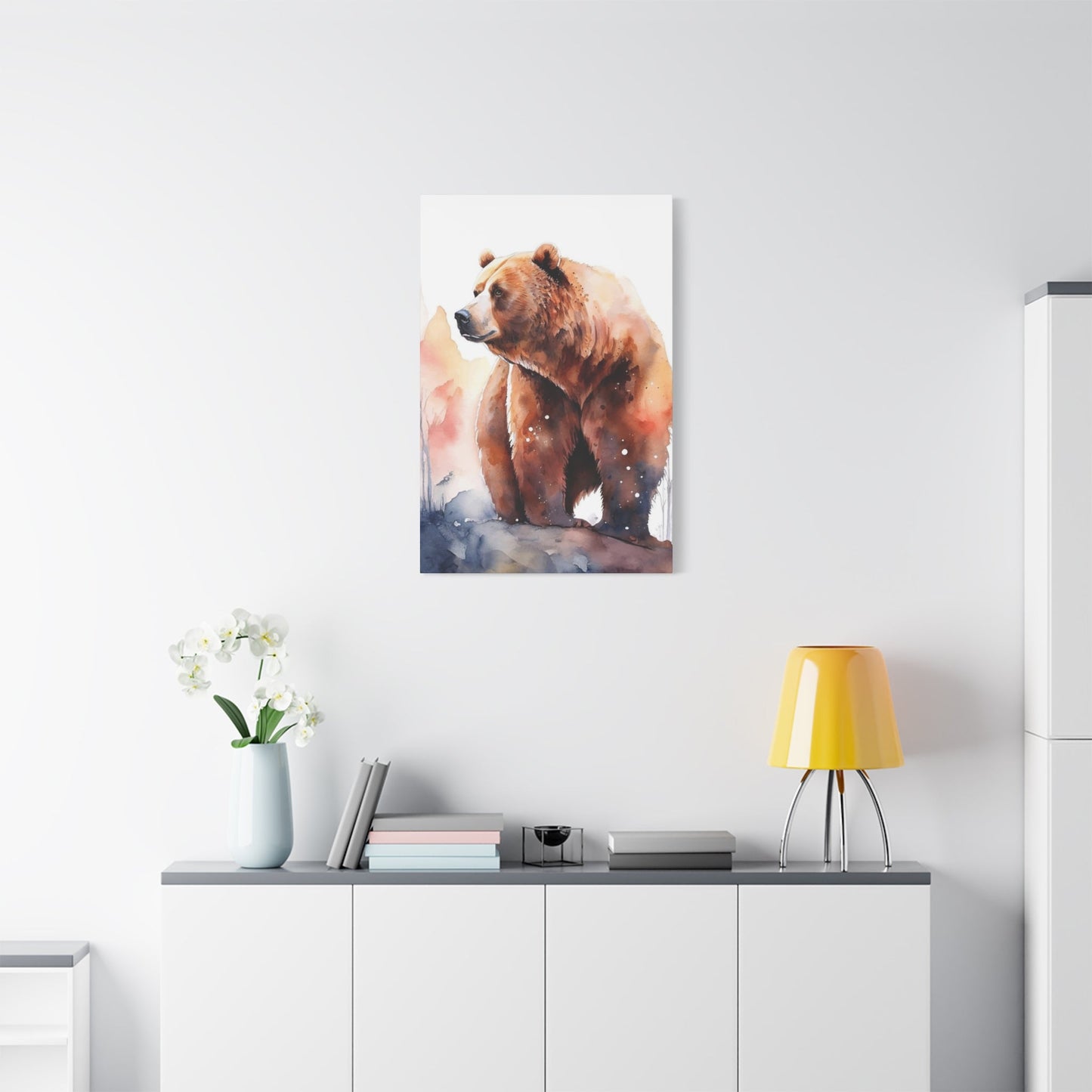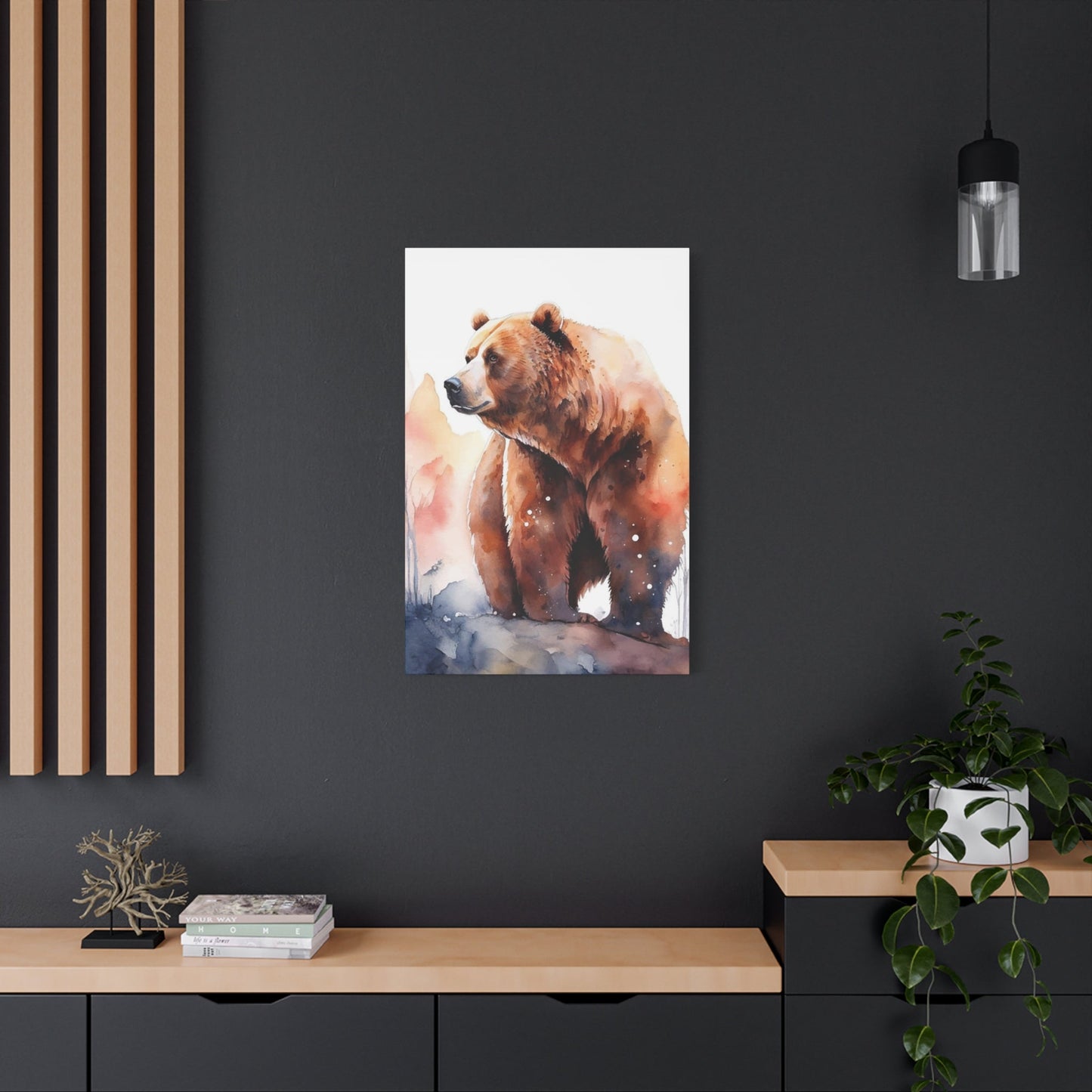Cute Bear Wall Art: Creative Painting Techniques and Ideas for Every Skill Level
Creating beautiful bear-themed artwork for your walls has never been more accessible or enjoyable. Whether you're a complete novice picking up a paintbrush for the first time or someone looking to expand their artistic repertoire, bear paintings offer endless possibilities for creative expression. These beloved creatures have captivated artists and art enthusiasts for generations, providing subjects that range from whimsical cartoon characters to majestic realistic portrayals.
The beauty of bear-themed artwork lies in its versatility and universal appeal. From nursery decorations to sophisticated gallery pieces, bear paintings can adapt to any setting and style preference. The process of creating these artworks is equally rewarding, offering therapeutic benefits while developing artistic skills and confidence. Each brushstroke brings these gentle giants to life on canvas, creating memorable pieces that can serve as focal points in any room.
Modern painting techniques have made bear artwork more approachable than ever before. With the right guidance and techniques, anyone can create stunning bear paintings that rival professional artwork. The key lies in understanding fundamental principles, choosing appropriate materials, and following proven methods that have helped countless artists achieve their creative goals.
Basic Principles for Novice Bear Artists
Starting your journey in bear painting begins with understanding fundamental artistic principles that apply to all forms of visual art. These foundational concepts serve as building blocks for more complex techniques and help ensure consistent results across different painting projects. Mastering these basics creates a solid foundation for artistic growth and experimentation.
Color theory plays a crucial role in creating compelling bear artwork. Understanding how different hues interact, complement, and contrast with each other enables artists to create depth, mood, and visual interest in their paintings. Primary colors form the foundation of all other colors, while secondary and tertiary colors expand the palette possibilities. Warm colors like browns, oranges, and yellows naturally suit bear subjects, while cool colors can provide effective contrast and background elements.
Composition fundamentals guide how elements are arranged within the painting to create visual balance and draw viewer attention to key focal points. The rule of thirds divides the canvas into nine equal sections, with important elements placed along these lines or at their intersections. This technique creates more dynamic and visually pleasing compositions than centering subjects directly in the middle of the canvas.
Light and shadow principles bring three-dimensional quality to flat surfaces. Understanding how light sources affect form helps create realistic depth and volume in bear subjects. Highlights appear where light directly hits surfaces, while shadows form in areas where light is blocked or reflected. Mid-tones bridge these extremes, creating smooth transitions that suggest rounded forms and natural contours.
Brushwork techniques significantly impact the final appearance of bear paintings. Different brush sizes and shapes create various textures and effects. Flat brushes work well for large areas and bold strokes, while round brushes excel at detail work and curved lines. Fan brushes create interesting texture effects perfect for fur representation, while palette knives can add impasto techniques for dimensional interest.
Proportion and anatomy awareness ensures bear subjects appear natural and believable. While stylization is certainly acceptable in artistic expression, understanding basic bear anatomy helps maintain credibility even in simplified or cartoon-style representations. Key proportions include head-to-body ratios, limb lengths, and facial feature placement that reflect natural bear characteristics.
Cartoon Bear Creation Methods
Cartoon bear painting offers an excellent entry point for beginners due to its forgiving nature and emphasis on charm over technical precision. These stylized representations focus on capturing personality and emotion rather than anatomical accuracy, making them ideal for artists developing confidence and basic skills. The simplified forms and exaggerated features of cartoon bears create immediate appeal while teaching fundamental painting techniques.
Starting with basic geometric shapes forms the foundation of cartoon bear construction. Circles serve as the primary building blocks for heads and bodies, while ovals can represent limbs and facial features. Rectangles and triangles add structural elements and can be modified to create various poses and expressions. This geometric approach simplifies complex forms into manageable components that can be refined and detailed as skills develop.
Facial expressions bring cartoon bears to life and convey personality traits that viewers connect with emotionally. Large, expressive eyes serve as focal points and can communicate various emotions through size, shape, and positioning. Rounded pupils and highlights create innocent, friendly appearances, while eyebrow positioning and mouth shapes further enhance emotional communication. Simple curved lines often suffice for noses, while ear placement and size contribute to overall character appeal.
Color choices for cartoon bears typically favor warm, approachable tones that enhance their friendly nature. Traditional brown bears can range from light tan to deep chocolate, while polar bears offer opportunities to work with whites, creams, and subtle blue shadows. Fantasy colors like purple, pink, or blue create whimsical characters that appeal particularly to younger audiences. Maintaining consistent color temperatures throughout the painting creates cohesive, professional-looking results.
Background elements complement cartoon bear subjects without overwhelming them. Simple geometric shapes, clouds, trees, or flower elements provide context without competing for attention. Gradual color transitions in backgrounds create depth while maintaining focus on the main subject. Minimal detail in background elements ensures the bear remains the primary focal point while adding environmental context.
Outlining techniques help define cartoon bear forms and separate them from backgrounds. Black outlines create bold, graphic appearances reminiscent of comic book illustrations, while colored outlines using darker versions of the subject colors create softer, more integrated effects. Varying outline thickness adds visual interest and can suggest depth and dimension even in simplified cartoon styles.
Teddy Bear Painting Progression
Teddy bear subjects combine the appeal of cartoon styling with slightly more realistic proportions and textures, creating artwork that resonates with viewers of all ages. These beloved toy representations offer opportunities to explore fabric textures, soft lighting, and nostalgic themes while maintaining approachable technical requirements. The familiarity of teddy bear forms makes them excellent subjects for developing observational skills and attention to detail.
Planning teddy bear compositions involves considering the emotional impact of pose, positioning, and environmental elements. Sitting poses create stability and approachability, while standing or action poses add energy and movement. The relationship between the teddy bear and its surroundings tells a story and creates emotional connections with viewers. Props like ribbons, clothing, or toys add personality and narrative elements to the composition.
Fur texture representation in teddy bear paintings requires specific techniques that suggest softness and tactile appeal. Short, overlapping brushstrokes create believable fur texture without becoming overwhelming or distracting. Varying stroke direction follows the natural flow of fur patterns, with shorter strokes on faces and longer strokes on bodies and limbs. Dry brush techniques create subtle texture variations that suggest different fur densities and lengths.
Lighting effects on teddy bear subjects create warmth and dimensional quality that enhances their cuddly appeal. Soft, diffused lighting eliminates harsh shadows and creates gentle transitions between light and dark areas. Multiple light sources can create complex but appealing lighting scenarios, with primary lights providing overall illumination and secondary lights adding fill and rim lighting effects.
Fabric and material representation requires understanding how different textures reflect and absorb light. Plush teddy bear fur creates soft, matte surfaces that absorb rather than reflect light, while accessories like ribbons or buttons may have more reflective qualities. These material differences add visual interest and realism to teddy bear paintings while providing opportunities to practice various painting techniques.
Color harmony in teddy bear paintings often emphasizes warm, comforting tones that evoke feelings of safety and nostalgia. Traditional teddy bear browns can be enhanced with subtle color variations that suggest natural lighting and shadow effects. Cool accent colors in backgrounds or accessories create pleasing contrasts without overwhelming the warm primary subject matter.
Minimalist Bear Artwork Approaches
Minimalist bear artwork strips away unnecessary details to focus on essential forms and emotional impact. This artistic approach teaches valuable lessons about composition, negative environments, and the power of suggestion over literal representation. Minimalist techniques help artists understand which elements are truly necessary for effective communication while developing confidence in simplified approaches.
Essential form identification requires analyzing bear subjects to determine their most recognizable characteristics. Distinctive silhouettes, key proportions, and signature features like ear shapes or nose profiles can communicate "bear" effectively without extensive detail. This editing process teaches artists to see subjects as collections of essential elements rather than overwhelming arrays of individual features.
Negative area utilization plays a crucial role in minimalist bear compositions. Empty areas around and within the bear form create breathing room and draw attention to the subject through contrast. Strategic use of negative areas can suggest forms, create implied lines, and guide viewer attention throughout the composition. Understanding how negative and positive areas interact creates more sophisticated and visually interesting minimalist artwork.
Limited color palettes in minimalist bear paintings create unity and sophistication while challenging artists to achieve maximum impact with minimal means. Monochromatic schemes using various shades, tints, and tones of a single color create elegant, cohesive results. Analogous color schemes using neighboring colors on the color wheel maintain harmony while providing subtle variation and interest.
Geometric simplification techniques reduce complex bear forms to basic shapes while maintaining recognizable characteristics. Circles, triangles, and rectangles can be combined and modified to suggest bear anatomy without literal representation. This approach teaches valuable lessons about shape relationships, proportion, and visual communication that benefit all forms of artistic expression.
Texture suggestions in minimalist bear artwork rely on technique rather than detail to convey surface qualities. Single brushstrokes can suggest fur directions, while color variations imply texture changes without literal representation. These economical approaches demonstrate how artistic technique can communicate complex information efficiently and elegantly.
Watercolor Bear Painting Techniques
Watercolor painting offers unique advantages for bear subjects, particularly in creating soft, naturalistic effects that complement the gentle nature of these creatures. The transparent qualities of watercolor allow for luminous color effects and subtle gradations that enhance the appeal of bear artwork. Understanding watercolor-specific techniques and properties enables artists to leverage these unique characteristics effectively.
Wet-on-wet techniques create soft, organic effects perfect for bear fur representation. Applying wet paint to wet paper or over existing wet washes creates flowing, unpredictable effects that suggest natural fur textures. This technique works particularly well for background washes and initial color applications, providing foundation layers for subsequent detail work.
Wet-on-dry applications offer more control and precision for detailed work and defined edges. Applying wet paint to dry paper creates predictable, controlled results suitable for features like eyes, noses, and specific fur patterns. This technique allows for layering and building up color intensity gradually while maintaining clean, defined edges where needed.
Color mixing approaches in watercolor require understanding how pigments interact when wet and how they appear when dry. Colors often appear lighter and less intense when dry, requiring artists to compensate during application. Mixing colors directly on paper creates more vibrant and natural-looking results than pre-mixing on palettes, as the slight color variations add visual interest and naturalism.
Layering strategies build color intensity and complexity gradually while maintaining watercolor's characteristic transparency. Initial washes establish overall color schemes and value patterns, while subsequent layers add detail, contrast, and refinement. Each layer should be allowed to dry completely before applying the next to maintain clean, crisp effects and avoid muddy color combinations.
Paper selection significantly impacts watercolor bear painting results. Heavier papers handle multiple washes and wet techniques better, while textured surfaces create interesting effects as paint settles into paper grain. Cold-pressed papers offer balanced texture and smoothness suitable for most bear subjects, while rough papers create more dramatic textural effects.
Brush techniques specific to watercolor include various loading methods, pressure applications, and stroke directions that create different effects. Fully loaded brushes create bold, consistent color applications, while partially loaded brushes create varied, textural effects. Brush pressure variations create line weight differences and texture suggestions perfect for fur representation.
Realistic Bear Rendering Simplified
Creating realistic bear paintings requires observation skills, patience, and systematic approaches that break complex subjects into manageable components. While realistic rendering demands more technical skill than stylized approaches, understanding fundamental principles and following proven methods makes this goal achievable for dedicated artists. The key lies in accurate observation, careful planning, and methodical execution.
Reference material collection provides the foundation for successful realistic bear paintings. High-quality photographs offer detailed information about anatomy, fur patterns, coloration, and lighting effects that inform artistic decisions. Multiple reference images from different angles provide comprehensive understanding of bear forms and characteristics. Field sketches and direct observation add personal interpretation and artistic sensitivity to photographic references.
Anatomical understanding enhances the credibility and impact of realistic bear paintings. Key anatomical features include head proportions, limb structures, and body masses that characterize different bear species. Understanding how these anatomical elements connect and relate to each other prevents common proportion errors and creates more convincing representations.
Value mapping establishes light and shadow patterns that create three-dimensional form on two-dimensional surfaces. Squinting at reference materials helps identify major light and dark areas while eliminating distracting details. Creating preliminary value studies in pencil or monochrome paint helps establish strong compositional foundations before adding color complexity.
Color observation skills develop through careful study of how local colors are modified by lighting conditions, reflected light, and atmospheric effects. Bear fur contains numerous color variations that create realistic appearances, from warm browns and cool grays to subtle purple and blue undertones in shadow areas. These color subtleties distinguish professional-quality realistic paintings from amateur attempts.
Brushwork strategies for realistic bear painting include various stroke directions, pressures, and techniques that suggest different fur textures and densities. Following fur growth directions creates convincing texture effects, while varying stroke lengths and weights suggests different fur types and lighting conditions. Blending techniques create smooth transitions between colors and values.
Detail hierarchy guides the distribution of detail throughout realistic bear paintings. Primary focal points receive the highest level of detail and contrast, while secondary and tertiary areas maintain less detail to avoid visual competition. This selective focus creates more impactful and visually coherent realistic bear artwork.
Child-Friendly Bear Art Projects
Creating bear artwork with children requires age-appropriate techniques, materials, and expectations that emphasize enjoyment and creative expression over technical perfection. Child-friendly approaches build confidence, develop motor skills, and foster artistic appreciation while creating meaningful artwork that celebrates each child's unique perspective and creativity.
Safety considerations include selecting non-toxic materials, providing appropriate workspace setups, and choosing techniques that minimize mess and potential hazards. Washable paints, large brushes, and protective coverings ensure safe, enjoyable painting experiences. Age-appropriate tools prevent frustration and enable successful creative expression at every developmental level.
Simplified techniques break complex bear painting processes into manageable steps that build success and confidence. Large brush applications create bold, expressive results while developing basic brush control skills. Finger painting techniques engage kinesthetic learners and create immediate, satisfying results. Sponge and stamp techniques add texture and interest while requiring minimal technical skill.
Color exploration through bear painting introduces children to basic color theory concepts through hands-on experimentation. Primary color mixing demonstrates how new colors are created, while warm and cool color concepts become apparent through bear subject matter. Color emotional associations develop naturally as children explore how different colors affect the mood and appeal of their bear paintings.
Creative variations encourage individual expression and prevent cookie-cutter results that discourage creativity. Suggesting different bear personalities, environments, and activities allows each child to personalize their artwork while maintaining achievable goals. Fantasy elements like colorful fur, imaginary settings, or anthropomorphic characteristics expand creative possibilities.
Skill development progressions introduce new techniques gradually as children master basic concepts. Initial projects might focus on simple shapes and bold colors, while subsequent projects can incorporate texture techniques, background elements, and increased detail work. This progressive approach builds skills systematically while maintaining appropriate challenge levels.
Display and celebration of child-created bear artwork validates creative efforts and builds confidence for future artistic endeavors. Creating special presentation formats, discussing artistic choices positively, and connecting artwork to larger artistic traditions helps children see themselves as legitimate artists capable of meaningful creative expression.
Geometric Bear Construction
Building bear forms from geometric shapes provides a systematic approach that simplifies complex subjects while teaching valuable lessons about proportion, structure, and visual organization. This methodical approach benefits artists at all levels by providing clear starting points and logical progression paths toward more sophisticated representations.
Circle-based construction uses various sized circles as foundation elements for bear heads, bodies, and major anatomical features. Large circles establish primary masses, while smaller circles define facial features, joints, and other details. Understanding how to modify and combine circles creates the foundation for countless bear variations and poses.
Triangle applications add structural elements and definition to circle-based bear constructions. Triangular ear shapes, nose forms, and limb definitions provide angular contrast to curved circle elements. Strategic triangle placement creates visual interest and helps define characteristic bear features that distinguish them from other animal forms.
Rectangle integration provides stability and structure to geometric bear constructions. Rectangular body masses support limb attachments and provide foundation elements for various poses and positions. Modified rectangles with rounded corners maintain geometric simplicity while suggesting organic bear forms.
Oval variations bridge circular and rectangular elements while providing additional form options for bear construction. Elongated ovals work well for limbs, while compressed ovals suggest facial features and body segments. Understanding how to manipulate oval shapes expands the range of bear poses and expressions possible within geometric frameworks.
Proportional relationships between geometric elements determine whether bear constructions appear natural and appealing. Head-to-body ratios, limb-to-torso relationships, and facial feature proportions all contribute to successful bear representations. Establishing these proportional guidelines early in the construction process prevents major revision needs later.
Refinement processes transform geometric foundations into finished bear artwork through selective modification and detail addition. Rounding sharp corners, adding texture suggestions, and incorporating color and shading transform basic geometric constructions into appealing bear subjects. This refinement process teaches valuable lessons about artistic development and finishing techniques.
Acrylic Bear Painting Methods
Acrylic paints offer excellent versatility for bear painting projects, combining ease of use with professional-quality results. Their quick drying times, water solubility when wet, and permanence when dry make them ideal for artists seeking reliable, predictable painting media. Understanding acrylic-specific techniques maximizes their potential for successful bear artwork creation.
Paint consistency modification affects application characteristics and final appearance. Straight from the tube acrylics create bold, opaque applications suitable for solid color areas and strong highlights. Adding water creates more transparent applications similar to watercolor effects, while adding medium maintains consistency while extending working time or creating special effects.
Blending techniques in acrylic painting require working quickly due to fast drying times. Wet-into-wet blending creates smooth color transitions when executed promptly, while dry brush blending creates subtle texture effects. Glazing techniques using transparent color layers create luminous effects and color complexity impossible with single applications.
Layering strategies take advantage of acrylic's quick-drying properties to build complex color effects and corrections efficiently. Underpainting establishes overall color schemes and value patterns, while subsequent layers add detail, refinement, and special effects. Each layer can be applied as soon as the previous layer is touch-dry, enabling rapid progress.
Texture creation through acrylic techniques includes impasto applications, palette knife work, and various brush techniques that create dimensional effects. Heavy paint applications suggest fur texture and add tactile interest to bear subjects. Dry brush techniques create subtle texture variations perfect for realistic fur representation.
Color mixing approaches in acrylic painting include both palette mixing and optical mixing techniques. Pre-mixing colors on palettes ensures consistent results and enables color matching across painting sessions. Optical mixing through overlapping transparent layers creates vibrant, complex colors that maintain luminosity and depth.
Brush selection for acrylic bear painting includes synthetic brushes that maintain their shape and spring when used with acrylic media. Various brush shapes and sizes create different effects, from broad washes with flat brushes to fine details with round brushes. Proper brush care ensures consistent performance and extends brush life significantly.
Expressive Bear Face Painting
Bear faces serve as compelling subjects that combine technical challenges with emotional expression opportunities. The concentration of character-defining features in bear faces makes them excellent focal points for artistic development while providing immediate visual impact in completed artwork. Understanding facial structure and expression principles creates more engaging and memorable bear paintings.
Eye rendering establishes emotional connection and brings bear subjects to life through careful attention to shape, color, and reflective qualities. Bear eyes typically appear small relative to human proportions but contain remarkable depth and intelligence. Proper highlight placement creates the illusion of moisture and life, while pupil shape and size affect perceived intelligence and friendliness.
Nose and muzzle construction defines bear species characteristics and individual personality traits. Different bear species exhibit varying nose and muzzle proportions that affect overall facial appearance. Color choices for these features often include darker values that provide contrast with lighter facial fur while maintaining natural appearance.
Ear placement and shape contribute significantly to bear facial character and species identification. Forward-facing ears suggest alertness and engagement, while relaxed ear positions create calm, approachable expressions. Ear size and shape variations distinguish between different bear types while offering opportunities for artistic interpretation.
Facial fur patterns require specific techniques that suggest texture while maintaining focus on primary features. Directional brushwork follows natural fur growth patterns around eyes, nose, and mouth areas. Varying fur lengths and densities creates visual interest while maintaining realistic appearance.
Expression development through subtle feature modifications creates bears with distinct personalities and emotional states. Slight eyebrow adjustments, mouth position changes, and head tilt variations communicate different moods and characteristics. These subtle modifications require careful observation and restraint to avoid overstatement.
Lighting effects on bear faces create three-dimensional form and enhance emotional impact through strategic highlight and shadow placement. Side lighting creates dramatic effects with strong contrast, while front lighting provides even illumination suitable for detailed feature work. Understanding how lighting affects facial perception guides artistic lighting decisions.
Bear Silhouette Creation Techniques
Silhouette painting reduces bear subjects to essential forms while creating dramatic, recognizable images that rely on shape and composition rather than detail and color. This simplified approach teaches valuable lessons about shape design, negative area utilization, and visual impact through reduction rather than addition.
Shape definition requires identifying the most characteristic bear silhouette elements that maintain recognition while eliminating unnecessary details. Distinctive ear shapes, body proportions, and limb positions communicate "bear" effectively without internal detail. This editing process teaches artists to see subjects as shape relationships rather than collections of surface features.
Contrast maximization ensures silhouette effectiveness through strong value differences between bear shapes and background areas. High contrast creates bold, graphic effects that read clearly from a distance while providing immediate visual impact. Understanding contrast relationships guides both subject and background design decisions.
Background design for bear silhouettes requires careful consideration of shape relationships and visual balance. Simple backgrounds prevent competition with silhouette subjects while providing context and visual interest. Gradated backgrounds create depth suggestions without overwhelming silhouette forms.
Compositional considerations include silhouette placement, size relationships, and edge treatment that create compelling overall designs. Silhouettes positioned according to compositional rules like the rule of thirds create more dynamic and visually interesting results than centered placements. Size relationships between multiple silhouettes create depth illusions and visual hierarchy.
Edge treatment affects silhouette quality and impact through careful attention to outline characteristics. Clean, sharp edges create crisp, graphic effects suitable for bold presentations, while slightly soft edges create more organic, naturalistic appearances. Edge quality consistency throughout silhouettes maintains professional appearance.
Creative variations expand silhouette possibilities through environmental elements, multiple subjects, and interactive compositions. Bear silhouettes combined with environmental elements like trees, mountains, or celestial objects create narrative contexts. Multiple bear silhouettes suggest family groups or action sequences that tell visual stories.
Forest Scene Bear Integration
Placing bear subjects within forest environments creates natural contexts that enhance both the bear subjects and the overall composition while providing opportunities to practice landscape painting techniques. These integrated compositions teach valuable lessons about atmospheric perspective, environmental lighting, and ecological relationships.
Environmental planning establishes believable settings that complement rather than compete with bear subjects. Research into bear habitats provides authentic environmental details that enhance composition credibility. Seasonal considerations affect both environmental appearance and bear behavior representation.
Atmospheric perspective techniques create depth illusions that suggest three-dimensional environments on flat painting surfaces. Distant elements appear lighter, less detailed, and cooler in color than foreground elements. Understanding these atmospheric effects guides color and detail distribution throughout forest scenes.
Tree and vegetation rendering requires specific techniques that suggest various plant types without overwhelming compositional focus. Simplified tree forms maintain environmental context while avoiding excessive detail competition. Foliage suggestions through color and texture variations create believable vegetation without laborious detail work.
Lighting integration ensures consistent illumination throughout forest scenes while highlighting bear subjects effectively. Single light sources create unified lighting effects, while multiple light sources can create complex but appealing illumination scenarios. Dappled light through forest canopies creates interesting patterns and visual texture.
Depth creation through overlapping elements, size relationships, and atmospheric effects establishes convincing three-dimensional illusions. Foreground, middle ground, and background elements create layered compositions that guide viewer attention through the scene. Strategic element placement creates visual paths that lead to focal points.
Color harmony in forest bear scenes typically emphasizes natural earth tones and vegetation colors that create cohesive, believable environments. Seasonal color schemes provide opportunities for various color palettes while maintaining natural appearance. Accent colors can provide visual interest without disrupting natural color relationships.
Paw Print Art Exploration
Bear paw prints offer unique artistic subjects that combine symbolic significance with technical challenges. These distinctive forms provide opportunities to explore texture, pattern, and symbolic representation while developing observational skills and artistic technique. Paw print subjects can serve as standalone artwork or elements within larger compositions.
Anatomical accuracy in paw print representation requires understanding bear foot structure, pad arrangements, and claw characteristics. Different bear species exhibit varying paw print features that distinguish them from each other and from other animal tracks. Proper proportion relationships between pads, claws, and overall print size create believable representations.
Texture techniques for paw print rendering include various methods for suggesting different surface qualities from rough paw pads to sharp claws. Stippling techniques create granular texture effects suitable for pad surfaces, while linear strokes suggest claw marks and fur texture. Understanding how different textures reflect light guides technique selection.
Pattern development using multiple paw prints creates dynamic compositions that suggest movement, direction, and narrative elements. Print arrangements can suggest walking, running, or climbing behaviors while creating visual rhythm throughout compositions. Size variations between prints add visual interest and suggest different bears or changing conditions.
Three-dimensional effects bring paw prints off flat surfaces through careful attention to lighting, shadow, and highlight placement. Depressions in surfaces create shadow areas, while raised areas catch light and create highlights. Understanding form and lighting relationships creates convincing dimensional illusions.
Environmental context for paw prints includes various surface types from mud and sand to snow and rock that affect print appearance and artistic treatment. Different surfaces create various textural opportunities while providing environmental storytelling elements. Weather effects like rain or wind can modify print appearance and add narrative interest.
Symbolic applications of paw print imagery connect with cultural associations and personal meanings that enhance artistic impact beyond purely representational goals. Paw prints suggest presence, journey, connection with nature, and wildlife awareness themes that resonate with many viewers. Understanding these symbolic dimensions adds depth to artistic expression.
Bear Cub Painting Approaches
Bear cubs present unique artistic opportunities that emphasize cuteness, innocence, and playful energy while requiring specific techniques for portraying juvenile characteristics. These appealing subjects offer excellent practice for developing observation skills and emotional expression through careful attention to proportion, posture, and facial features.
Proportional differences between adult bears and cubs require understanding how juvenile characteristics create "cute" responses in viewers. Larger head-to-body ratios, bigger eyes relative to face size, and shorter limbs create characteristic cub appearances. These proportional relationships trigger positive emotional responses that enhance artwork appeal.
Behavioral representation captures the playful, curious nature of bear cubs through pose selection, facial expressions, and environmental interactions. Active poses suggest exploration and play, while resting poses emphasize vulnerability and innocence. Understanding typical cub behaviors guides artistic choices for pose and expression selection.
Fur texture differences between adult and cub fur require specific painting techniques that suggest softer, fluffier juvenile coats. Shorter, more random brushstrokes create the appearance of baby fur, while lighter color values suggest the softer quality of juvenile coats. Avoiding excessive texture detail maintains the softness associated with young animals.
Facial feature emphasis focuses on large eyes, small noses, and rounded facial contours that characterize young bear faces. Eye size and placement significantly affect perceived age and appeal, while expression through eye shape and mouth position creates personality and emotional connection. Subtle feature modifications create distinct individual characteristics.
Color palette selections for bear cubs often emphasize lighter, warmer tones that suggest youth and innocence. Avoiding harsh contrasts and dark shadows maintains the gentle quality associated with young animals. Color temperature considerations create appealing, harmonious compositions that enhance emotional impact.
Environmental storytelling through cub interactions with surroundings creates narrative elements that enhance viewer engagement. Cubs exploring, playing, or learning provide opportunities for dynamic compositions that suggest movement and curiosity. Prop elements like fallen logs, flowers, or water features add context and visual interest.
Abstract Bear Art Concepts
Abstract bear painting liberates artists from literal representation while maintaining essential bear characteristics that ensure subject recognition. This approach encourages creative interpretation, color exploration, and compositional experimentation while developing artistic confidence and personal style. Abstract techniques demonstrate that artistic impact often depends more on emotional expression than literal accuracy.
Essential characteristic identification requires determining which bear features remain necessary for recognition when details are eliminated or abstracted. Basic silhouettes, distinctive proportions, and key features like ear shapes often suffice for bear identification even in highly stylized treatments. This distillation process teaches valuable lessons about visual communication and essential versus optional elements.
Color exploration opportunities in abstract bear painting include non-naturalistic color choices that express emotion, create visual impact, or develop personal artistic statements. Bold, unexpected colors can create striking effects while maintaining bear recognition through form and composition. Color interaction experiments demonstrate how different combinations affect mood and visual impact.
Compositional freedom allows for creative arrangement of bear elements according to artistic vision rather than natural observation. Elements can be rearranged, multiplied, or transformed to create desired effects while maintaining essential bear characteristics. This freedom encourages creative risk-taking and personal artistic development.
Texture experimentation includes various techniques and tools that create surface interest and visual texture without literal representation. Palette knife techniques, sponge applications, and unconventional mark-making tools create abstract texture effects that suggest fur while maintaining artistic interpretation. These experimental approaches often yield unexpected and exciting results.
Emotional expression through abstract bear painting emphasizes feeling and impression over literal accuracy. Color choices, mark-making intensity, and compositional decisions can express various emotions from playfulness to power. Understanding how artistic elements affect emotional response guides creative decisions in abstract approaches.
Style development through abstract bear painting helps artists discover personal approaches and preferences that distinguish their work from others. Experimenting with various levels of abstraction, color approaches, and mark-making techniques reveals individual artistic tendencies and preferences. This self-discovery process is crucial for artistic growth and development.
Pastel Bear Artwork Creation
Pastel media offers unique advantages for bear subjects through its direct application methods, rich color possibilities, and natural texture-creating capabilities. The soft, powdery nature of pastels complements bear fur representation while providing immediate, satisfying results that encourage artistic exploration and experimentation.
Paper selection for pastel bear artwork significantly affects final results through texture, color, and tooth characteristics that influence pastel adhesion and blending capabilities. Textured papers create interesting surface effects as pastel pigments settle into paper grain, while smoother papers enable detailed work and precise applications. Paper color affects overall color relationships and can provide mid-tone values that reduce painting time.
Layering techniques build color richness and complexity through multiple pastel applications that create optical color mixing and depth effects. Initial applications establish overall color schemes and major form definitions, while subsequent layers add refinement, detail, and special effects. Understanding when to blend and when to leave marks creates varied and interesting surface textures.
Blending methods include finger blending for smooth transitions, tool blending for controlled effects, and optical blending where colors mix visually rather than physically. Each blending approach creates different characteristics and serves different artistic purposes. Selective blending maintains mark variety and texture interest while creating necessary smooth transitions.
Color mixing in pastels occurs primarily through layering and optical effects rather than physical pigment mixing. Understanding how different colors interact when overlaid guides layering decisions and color planning. Limited palettes challenge artists to create maximum color variety through skillful layering and optical mixing techniques.
Fixing techniques preserve pastel artwork while maintaining color integrity and surface texture. Light fixative applications between layers allow for subsequent applications while providing stability. Final fixing applications protect completed artwork while potentially darkening colors slightly. Understanding fixing effects guides application decisions throughout the painting process.
Detail development in pastel bear artwork requires understanding how to use pastel edges, pressure variations, and tool selection for different effects. Sharp pastel edges create fine lines and details, while broad side applications create large area coverage. Varying pressure creates different mark intensities and texture effects perfect for fur representation.
Arctic Bear Painting Techniques
Polar bears present unique artistic challenges and opportunities through their distinctive coloration, arctic environments, and symbolic associations. These magnificent creatures require specific techniques for representing white and near-white fur while creating visual interest and maintaining recognizable bear characteristics in challenging monochromatic situations.
White and near-white color management requires understanding how white subjects appear under different lighting conditions and against various backgrounds. Pure white rarely appears in natural lighting, with most "white" areas actually containing subtle color variations from warm yellows to cool blues depending on light sources and reflected colors. These color subtleties distinguish professional-quality polar bear paintings from amateur attempts.
Arctic environment representation includes ice, snow, and atmospheric conditions that complement polar bear subjects while providing context and visual interest. Simplified ice forms avoid excessive detail while suggesting arctic conditions. Atmospheric effects like blowing snow or ice fog create mood and environmental authenticity.
Texture techniques for polar bear fur include methods that suggest dense, insulating coat characteristics while maintaining visual interest in predominantly white subjects. Directional brushwork follows fur growth patterns, while subtle value and color variations create form and depth. Avoiding pure white applications throughout maintains subtle color relationships and prevents flat appearance.
Lighting effects on white subjects require careful observation of how light and shadow affect predominantly white forms. Reflected light from ice and snow creates complex lighting situations with multiple light sources and unusual color casts. Understanding these lighting effects guides artistic interpretation and color choices.
Background design for polar bear subjects requires careful consideration of value relationships and color harmony. Ice and snow backgrounds provide natural contexts but require careful handling to avoid subject camouflage. Subtle background variations create depth and interest without overwhelming white bear subjects.
Atmospheric perspective in arctic scenes creates depth through subtle color and value changes that suggest distance and environmental conditions. Distant elements appear cooler and lighter, while atmospheric effects like ice fog reduce contrast and detail visibility. These effects create convincing three-dimensional illusions in arctic environments.
Creative Bear Character Development
Developing unique bear characters combines artistic skill with imaginative storytelling to create memorable subjects that engage viewers emotionally and intellectually. This approach moves beyond simple representation toward character creation that incorporates personality traits, emotional expressions, and narrative elements.
Personality trait visualization requires translating abstract characteristics into visual elements that communicate character traits effectively. Confident bears might feature upright postures and direct gazes, while shy bears could appear smaller with averted eyes. Understanding how posture, expression, and prop elements communicate personality guides character development decisions.
Expression refinement through subtle facial feature modifications creates distinct emotional states and personality indicators. Eyebrow positions, mouth shapes, and head tilts significantly affect perceived character traits and emotional states. These subtle modifications require careful observation and restraint to avoid caricature while maintaining effectiveness.
Costume and accessory integration adds character elements that enhance personality communication while providing opportunities for creative expression. Simple accessories like hats, scarves, or toys can suggest occupations, hobbies, or personality traits without overwhelming bear characteristics. These elements should complement rather than dominate character presentations.
Color psychology applications use color associations to reinforce character traits and emotional communications. Warm colors suggest friendly, approachable characters, while cool colors might indicate calm or mysterious personalities. Understanding cultural color associations guides color choices that support character development goals.
Pose and gesture selection communicates character traits through body language and positioning that suggests personality characteristics. Active poses indicate energetic personalities, while relaxed poses suggest calm dispositions. Gesture elements like raised paws or tilted heads add personality while maintaining bear characteristics.
Environmental storytelling creates contexts that support character development while providing visual interest and narrative elements. Character-appropriate environments reinforce personality traits while suggesting backstories and interests. These environmental elements should support rather than compete with character presentations.
Conclusion
Cute bear wall art is a charming and versatile way to bring warmth, whimsy, and personality into any room. Whether you’re a beginner or an experienced artist, there are creative painting techniques and ideas suited for every skill level that allow you to capture the lovable spirit of bears in your artwork. From simple, stylized shapes and soft pastel colors to more detailed, textured portraits, bear-themed art invites playful exploration and creativity.
Using techniques like watercolor washes, acrylic layering, or mixed media collage, artists can experiment with different styles—ranging from minimalist and cartoonish to realistic and impressionistic. These approaches not only make the process enjoyable but also help develop new skills while producing adorable pieces that brighten walls and hearts alike.
Cute bear wall art appeals to all ages and décor styles, fitting perfectly in nurseries, kids’ rooms, cozy living spaces, or even trendy offices. Its universal appeal makes it a wonderful gift idea and a timeless addition to any art collection.
Ultimately, creating bear-themed wall art is about celebrating the gentle, endearing qualities of these animals while embracing your own artistic journey. Whether you paint a cuddly cub or a majestic bear in the forest, this subject offers endless inspiration and joy—making your space feel inviting, cheerful, and uniquely yours.













